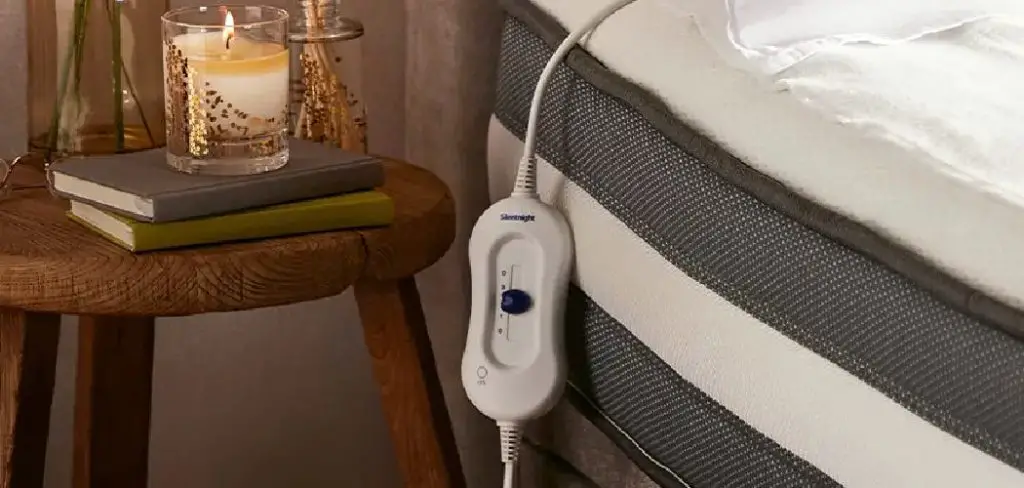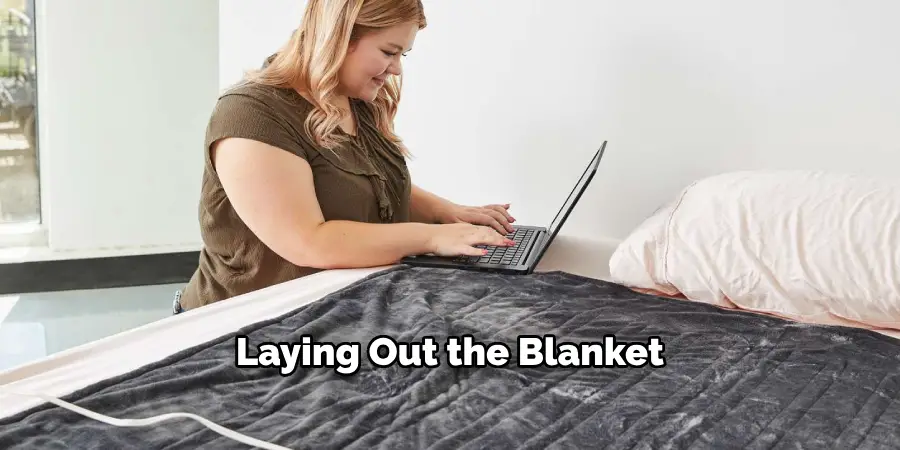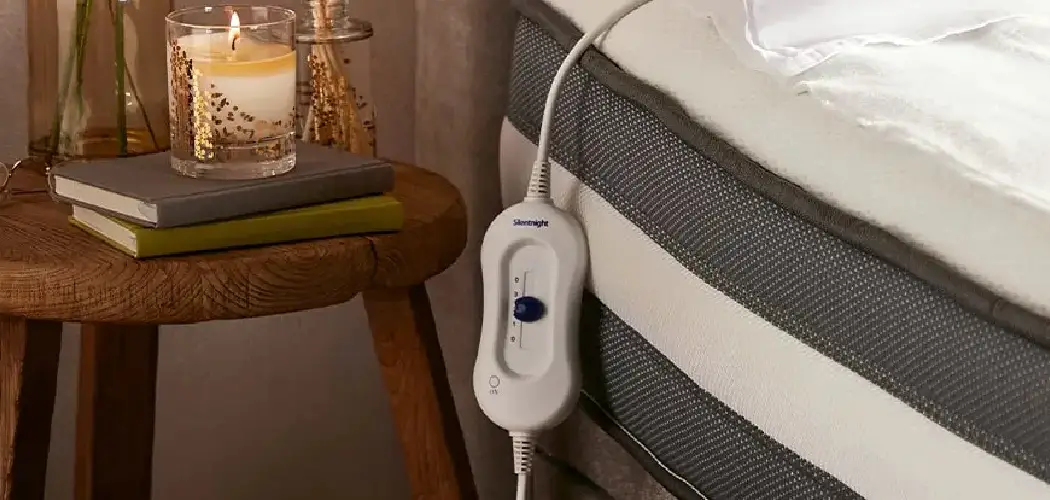Electric blankets have become a go-to solution for staying cozy and warm during the frosty months of the year. Their gentle warmth can transform a chilly bed into a sanctuary of comfort, ensuring restful sleep even on the coldest nights. Modern electric blankets are equipped with advanced safety features, such as automatic shut-off and overheat protection, making them a popular choice for heating needs.

These innovations prioritize user safety, offering peace of mind while enjoying luxurious warmth. For those eager to learn how to set up an electric blanket, this guide provides comprehensive steps to ensure a safe and effective setup. Following these guidelines will ensure optimal warmth and prolong the blanket’s lifespan, making it a reliable companion throughout the winter season.
Choosing the Right Electric Blanket
Selecting the perfect electric blanket involves understanding the different types available, the materials and features they offer, and choosing the right size for your needs. This section will guide you through these aspects to help you make an informed decision.
Types of Electric Blankets
Electric blankets come in several forms, including throw blankets, full-size blankets, and heated mattress pads. Each type serves different purposes and user preferences:
- Throw Blankets: These are small, lightweight, and perfect for use on couches or armchairs. They are portable and ideal for those who want a blanket that can easily move from room to room. However, their size may not suffice for bedding purposes.
- Full-Size Blankets: Designed to cover an entire bed, full-size blankets are available in various sizes, such as twin, queen, or king. They provide thorough coverage and are great for keeping warm throughout the night. The downside is they can be bulkier and more challenging to move.
- Heated Mattress Pads: These lie beneath the fitted sheet, providing warmth from below. They are unobtrusive and evenly distribute heat across the bed. They are not as versatile as blankets in terms of mobility and should be matched perfectly with the bed size.

Materials and Features
Electric blankets are constructed using various materials, each offering different comfort levels and durability:
- Fleece: Soft and plush fleece blankets provide excellent warmth and comfort. They’re perfect for those who appreciate coziness, though they might be thicker than other options.
- Microplush: Known for their velvety texture, micro plush blankets feel luxurious against the skin and retain heat well. They can be heavier than other materials.
- Cotton: Cotton is breathable and has a natural feel. While it isn’t as insulating as synthetic materials, it is easier to maintain and ideal for those prone to overheating.
Key features to consider include adjustable heat settings, which allow for personalized comfort; automatic shut-off for safety; and machine washable options, ensuring easy care and longevity.
Sizing Considerations
Choosing the correct size is crucial to ensuring your electric blanket fits seamlessly into its intended space:
- Beds: Measures should be taken to match the blanket size with the bed dimensions. Consider if you need complete coverage for two people or just a blanket to warm one side.
- Seating Areas: For throws, ensure the blanket fits well on couches or chairs, offering ample coverage without drooping onto the floor.
It’s essential to check the dimensions of your bed or seating area beforehand to ensure a proper and tailored fit. This careful consideration helps maintain effective heating and enhances the blanket’s functionality. By understanding these factors, you can confidently select an electric blanket that meets your demands, providing warmth and comfort tailored to your lifestyle.

Preparing the Area
Before setting up your electric blanket, it’s important to choose a suitable location that optimizes both comfort and safety. Begin by selecting the most appropriate spot, whether it’s on your bed, couch, or chair. Ensure that the area provides enough space for the blanket to lie flat without excessive folds or creases. Beds are often preferred for full-size blankets, while throw blankets are ideal for seating areas like couches or armchairs. It is crucial to avoid areas with high moisture levels, such as bathrooms or poorly ventilated spaces, as these can be unsafe and may damage the blanket.
Once you’ve chosen the location, clear the space of any clutter to minimize the risk of overheating and allow for proper heat distribution. Remove unnecessary items such as decor, reading material, or extra bedding that could obstruct or trap heat. Ensure that the furniture, including beds and seating, is in good condition and compatible with the electric blanket. This compatibility includes checking the weight capacity of your furniture and ensuring that the blanket’s dimensions fit well within the surface area.
Inspect your electric blanket thoroughly before use. When unboxing the product, check for any visible signs of damage, such as frayed wires, tears in the fabric, or faulty controls. It’s important to address any defects immediately by contacting the manufacturer or retailer for assistance. Never use a damaged electric blanket, as it poses a significant safety risk.
To fully understand the setup process, read the user manual accompanying your electric blanket. Every model can have different specifications and instructions, so familiarize yourself with the guidelines to ensure a safe and effective setup. This may include proper power source connections, heat setting configurations, and maintenance for optimal performance.
By following these preparatory guidelines, you can create a cozy environment that is both safe and enjoyable, maximizing your electric blanket’s comforting warmth.
How to Set up An Electric Blanket: Setting Up the Electric Blanket
Laying Out the Blanket
To begin setting up your electric blanket, ensure that each corner of the blanket is unfolded evenly across the bed or seating area. This process helps prevent folds or bunches that obstruct heat distribution and create uncomfortable pressure spots.
Start by placing one end of the blanket smoothly along the head or backrest of your chosen area, then gently drape or pull the other end until the blanket lies flat. It’s essential to align the blanket’s edges with the perimeter of the bed or furniture, leaving no excess fabric hanging over the sides. For beds, ensure that the blanket fits securely under the mattress pad if using a heated mattress pad or on top of the fitted sheet for standard blankets.

When laying out the blanket, take special care to position the power cord to allow easy access to an outlet. The cord should run straight from the control unit to the wall socket without being trapped under the blanket or any other objects, preventing overheating and ensuring safe operation. If possible, place the cord along the edge of the bed or under a piece of furniture where it won’t be stepped on or tangled.
Connecting the Power Cord
Once the blanket is positioned correctly, proceed to connect the power cord. Start by identifying the connector plug and securely inserting it into the appropriate port on the electric blanket. This connection should be firm, with no visible gaps that may loosen during use. Before plugging the blanket into an electrical outlet, check to make sure the cord is free of any knots, tangles, or kinks, as these can potentially cause damage or impair the blanket’s function.
Plug the power cord directly into an easy-to-access outlet. To reduce the risk of electrical hazards, avoid using extension cords whenever possible. If necessary, reroute the cable to minimize the likelihood of someone accidentally tripping over it. For added security, consider using tie straps or organizing clips to manage the cord neatly.
Adjusting Heat Settings
After the power connection has been made, proceed to adjust the heat settings using the controller or remote that comes with your electric blanket. To begin, turn on the blanket by pressing the power button. It’s advisable to start with the lowest heat setting, allowing your body to acclimate before making any further adjustments. Gradually increase the heat to a comfortable level, paying close attention to how your body reacts to the warmth. This approach enhances comfort and ensures a safe experience by preventing overheating or burns.
Familiarize yourself with the controller’s features, such as any pre-set heating functions or timers, which can be advantageous for adjusting heat distribution during different times of the day or night. You can enjoy a personalized warmth that suits your needs by mastering these settings. Remember to turn off the blanket when it’s not in use to conserve energy and maintain safety.
By following these comprehensive steps, you can ensure that your electric blanket is set up safely and effectively, allowing you to enjoy its warmth and comfort without concern.
Safety Precautions
Reading the Safety Guidelines
Before using your electric blanket, it is imperative to thoroughly read and understand the safety instructions provided by the manufacturer. These guidelines are designed to ensure your safety and enhance your comfort. Pay particular attention to warnings about using the blanket with infants, people with disabilities, or individuals who are unable to manage their own temperature, as these groups may be at increased risk. Proper adherence to these instructions can prevent accidents and minimize health risks.
Avoiding Overheating
To prevent the risk of overheating, it’s recommended not to use the electric blanket while sleeping or for prolonged periods at high heat settings. Such practices can lead to discomfort or burns. To ensure a balanced and safe experience, utilize the blanket’s timer or automatic shut-off features. These built-in safety measures help regulate the blanket’s operation, turning it off after a set duration or reducing the heat when it reaches a certain limit.

Regular Inspections
Conduct regular inspections of your electric blanket to identify any early signs of wear and tear. Before each use, carefully examine the blanket for frayed cords, damaged fabric, or malfunctioning controllers, as these issues pose safety hazards. Should any damage be detected, refrain from using the blanket and contact the manufacturer or retailer for repairs or replacements.
When not in use, store the blanket in a manner that avoids tight folding to maintain its integrity and functionality. Avoid placing heavy items on top of it to prevent damage that could compromise safety and performance. Following these storage and maintenance tips will extend the lifespan of your electric blanket while ensuring it remains a reliable and safe source of warmth.
Caring for Your Electric Blanket
Proper care and maintenance of your electric blanket are crucial to ensure its longevity and performance. Follow the manufacturer’s cleaning recommendations to keep your electric blanket in top condition.
Cleaning Instructions
When it comes to cleaning an electric blanket, always refer to the manufacturer’s guidelines. Many electric blankets are designed to be machine washable. Before washing, be sure to remove the power cord and detach any controllers, as water can damage these components. Use a gentle cycle with cold or lukewarm water and a mild detergent when machine washing. If hand washing is recommended, soak the blanket in a tub of lukewarm water with a mild detergent, gently agitating it to cleanse the fabric without undue stress.
Drying and Storing
Careful drying is essential to prevent damage to your electric blanket. Air drying is usually the safest method—lay the blanket out flat on a clean, dry surface and reshape it to its original dimensions. If you choose to use a dryer, opt for a low-heat setting and remove the blanket before it is completely dry to avoid damage from excessive heat. Ensure the blanket is completely dry before storing it to prevent mold and mildew.
When storing your electric blanket, fold it loosely and avoid placing heavy objects on top of it. Store in a dry, well-ventilated space to maintain its quality. Keeping your blanket in its original packaging or a breathable storage bag can protect it from dust and ensure it stays clean until its next use.
Maintaining Functionality
Periodic inspections and proper care of your electric blanket are key to maintaining its safety and effectiveness. Regularly check for any signs of damage or wear, paying close attention to the power cord and controllers, as well as the fabric itself. Addressing any issues promptly and adhering to the recommended washing and storage guidelines will help prolong the lifespan of your blanket and ensure it provides safe, consistent warmth for seasons to come.
Conclusion
Using an electric blanket provides unparalleled warmth and comfort, making it an ideal choice for cozying up during the colder months. By evenly distributing heat, electric blankets allow you to create a comfortable sleep environment, reducing the chill on cold nights. To optimize your experience, following the safety and care guidelines outlined in this document is vital.
A proper understanding of “how to set up an electric blanket” ensures that you can enjoy all the benefits with peace of mind. Regular maintenance and inspections will keep your blanket in perfect condition, ensuring it remains a safe and effective source of warmth. There’s nothing quite like the feeling of snuggling under a warm blanket, and by taking the necessary steps to ensure its proper use, you can indulge in this joy to its fullest, enjoying continued comfort whenever you need it.

